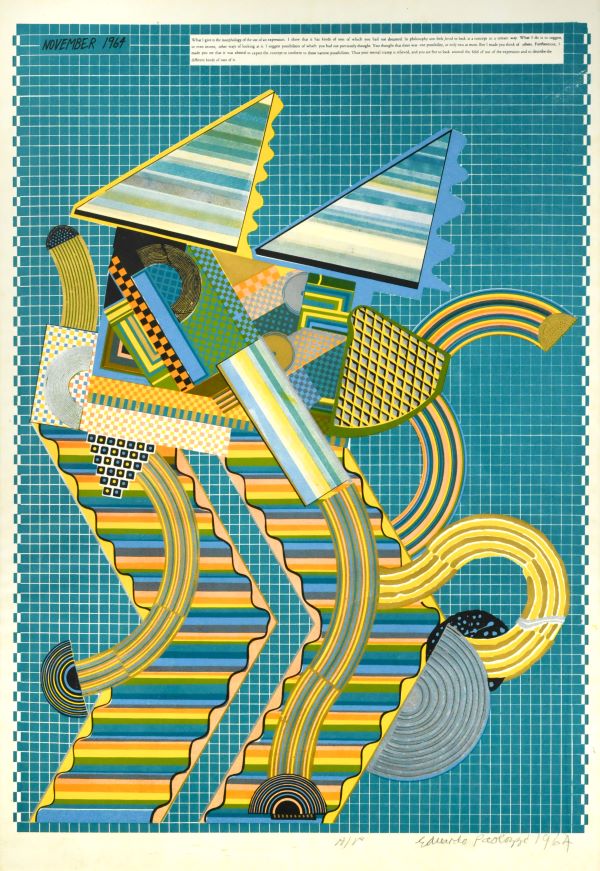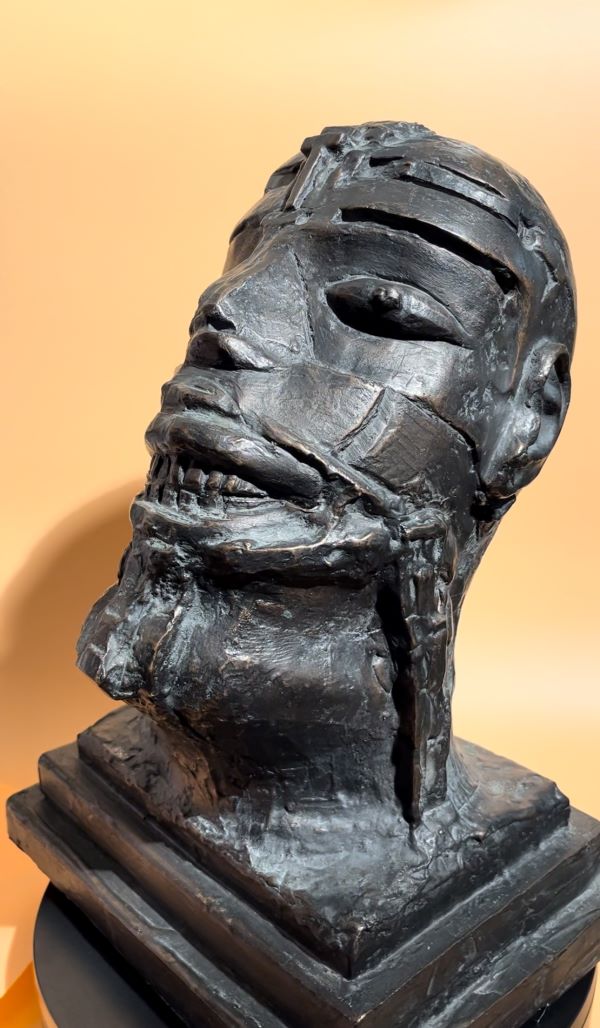As the Scottish National Gallery of Modern Art celebrates the centenary of Eduardo Paolozzi (1924-2005), we look back on the life and works of this influential artist.
Born in March 1924 in Leith, Scotland, Eduardo Paolozzi was the eldest son of Italian immigrants. He studied at the Edinburgh College of Art, and briefly at Saint Martin’s School of Art, then at the Slade School of Fine Art at University College London from 1944 to 1947, after which he worked in Paris.
After Paris, he moved back to London, eventually establishing his studio in Chelsea - a workshop filled with hundreds of found objects, models, sculptures, materials, tools, toys and stacks of books.
Paolozzi came to public attention in the 1950s by producing a range of striking screen prints and Art Brut sculpture. He was a founder of the Independent Group in 1952, which is regarded as the precursor to the mid-1950s British and late 1950s American Pop Art movements. His seminal 1947 collage I was a Rich Man’s Plaything is considered the earliest standard bearer representing Pop Art.

A screen print from Paolozzi's ‘As is When’ series, dated 1964
He always described his work as Surrealist art and, while working in a wide range of media though his career, became more closely associated with sculpture. Paolozzi is recognised for producing largely lifelike statuary works, but with rectilinear - often cubic - elements added or removed, or the human form deconstructed in a Cubist manner.
Paolozzi’s fascination with the morphological aspects of the human head finds its roots in his 1950 busts of 'Mr. Cruikshank'. Inspired by a research dummy composed of wood and used to measure the penetration of X-rays into a human skull, Paolozzi’s Mr. Cruikshank sought to disrupt the traditional ideals of the portrait bust.
Amongst a series of bronze cast heads crafted by Paolozzi in the late 1980s, is Count Basie, which depicts the American jazz pianist and bandleader. The statue will be going under the hammer at Cheffins’ forthcoming Art and Design sale on 22nd February, guided at £12,000-£18,000. It is numbered 2/2 from an edition of three, with only two bearing numbered designations. Distinguished by their varied patinas, a green patinated version, numbered 1/2, is held at the Tate, whilst an unnumbered brown-green example forms part of the collection of the National Galleries of Scotland. It is in these works that Paolozzi demonstrates the full fruition of his explorations into the human head.

Poalozzi's Count Basie statue
Mapping his collaging practice onto the three-dimensional object, Paolozzi’s Count Basie deconstructs the human face, pushing it towards the rubicon of unrecognisability. Using found objects, including, appropriately for the subject, a mouth-shaped harmonica, the artwork adopts a hybrid identity, blending elements of both human and machine. Although the formal differences between Mr Cruikshank and Count Basie are dramatic, Paolozzi has borrowed and repurposed motifs from his earlier work, including the eyes of the former, which, on the latter, become enlarged and distorted.
Martin Millard, Director at Cheffins, comments: “The brutalist nature of this particular bronze is a perfect illustration of the artist’s lifetime obsession with classicism, the found object and the uneasy relationship between man and machine. Considering only two other examples of this head were cast, both of which are in public collections, this represents a rare chance to acquire such an important piece.”